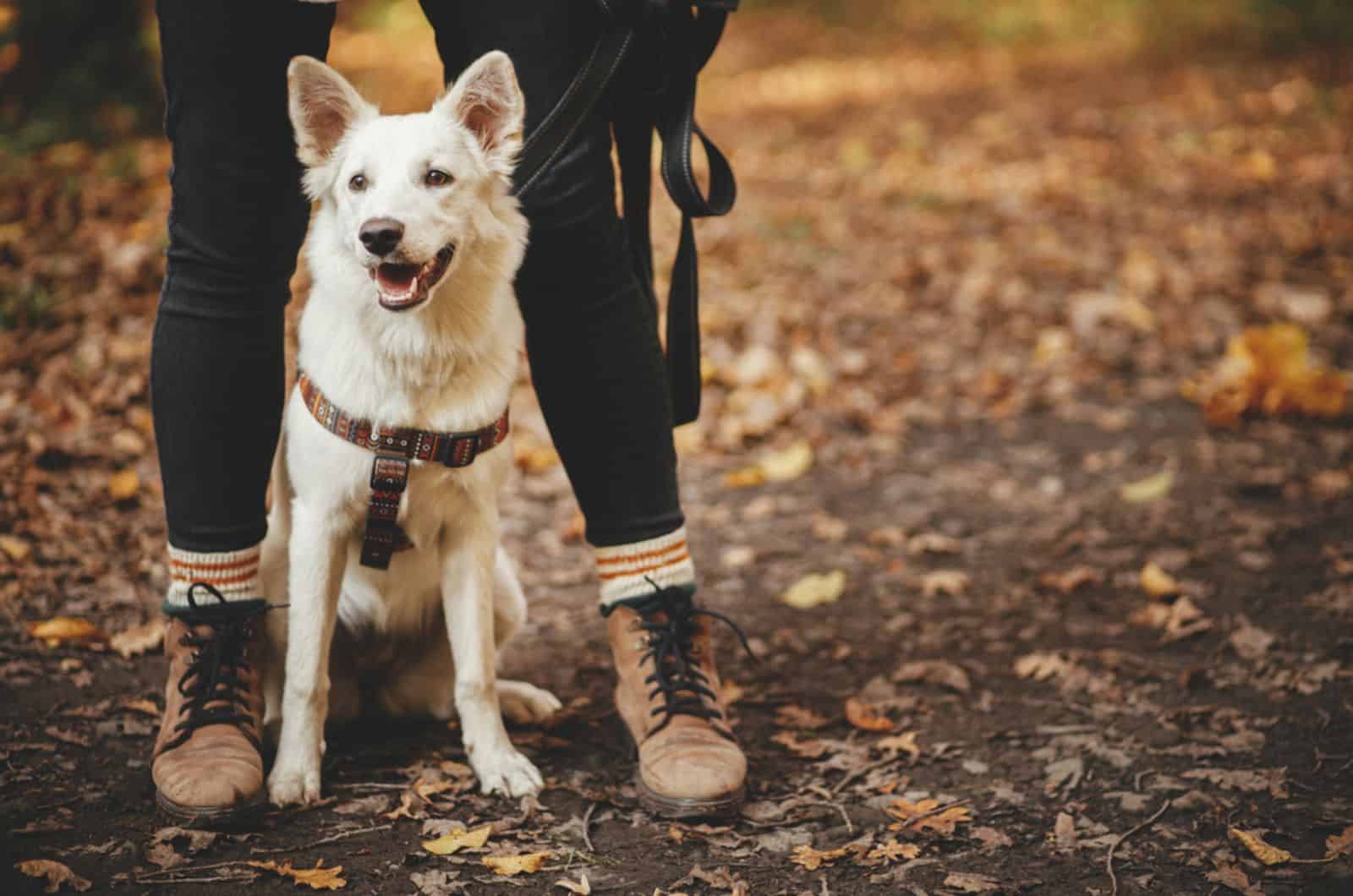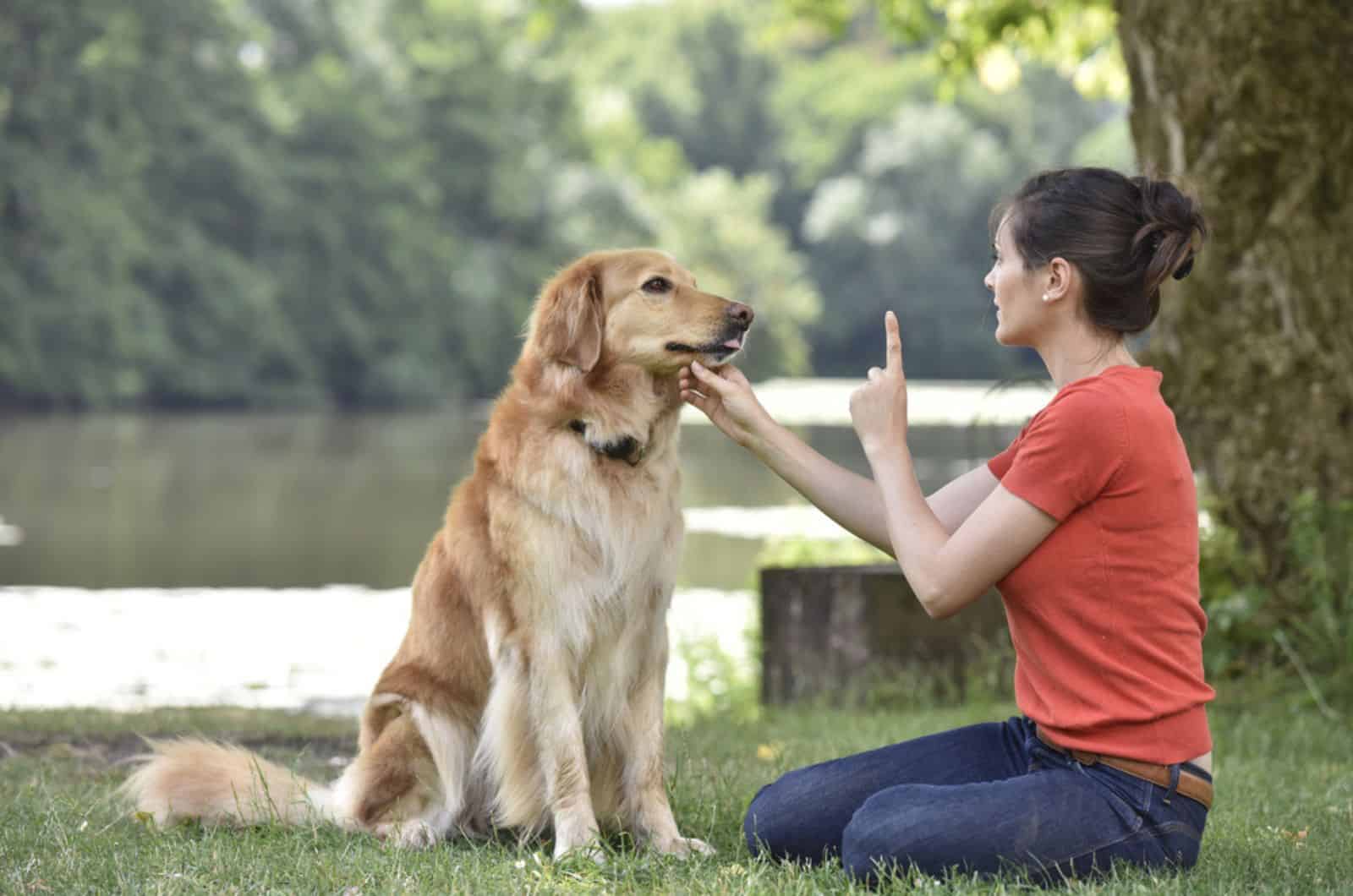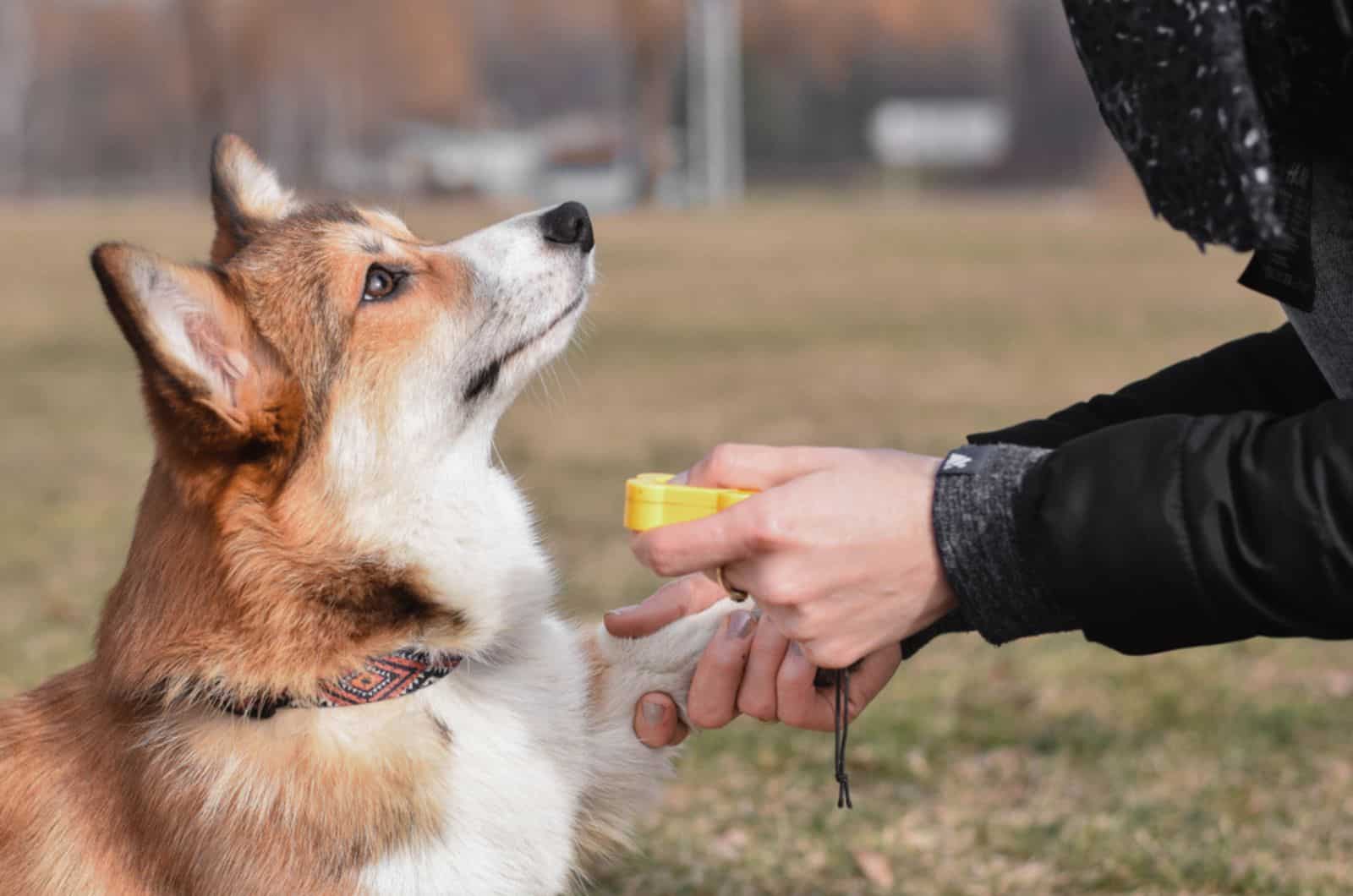A lot of dog breeds excel at guarding their owners, but sometimes the intensity with which they do it is beyond expectation in a negative way. Small or big, undesired behavior in dogs can be a tough nut to crack, which is why we will learn today how to train an overprotective dog.
The domestication of dogs does not inherently mean a dog with strong protective instincts will do it in a balanced way. The fact that less than ten percent of owners train their dogs enables the continuation of enabling unwanted behavior.
Still, there are plenty of other factors that cause an overly defensive mindset. You will be able to immediately try some tips from this article and see positive results in a matter of minutes. Dog training time.
Dog Breed And Owner-Dog Relationship Type Matter

It goes without saying that dog breeds like German shepherds, Rottweilers, Doberman Pinschers, and a lot of other canines that excel at guarding and protection will have a higher likelihood of being overprotective.
You might think that is a good thing, since they were brought into your home to protect the family, but that is where most owners are mistaken. A dog always needs structure and guidance, especially during puppyhood. This will translate into a well-behaved adult dog.
Having a specific type of relationship in mind should be motivating enough to take all the necessary steps to avoid unwanted behavior, and training is one that will have the biggest impact on this problem.
Before going into training methods, I must say that your everyday behavior and state of mind massively affect your dog’s behavior. People often consider themselves as “owners” but, in practice, the dog owns them.
What does that mean? Well, you need to be assertive, calm, and lead by example for a dog to consider you the highest ranking member of your “pack”. With countless stressing situations biting at your day, it becomes very hard practicing all those things.
Your dog might see that as a sign of weakness and “take over” your free will. Being overprotective is usually associated with possessiveness, but it is mostly the dog perceiving you as inept at being a leader. I recommend these seventeen steps to become an alpha leader.
Even if you are effectively leading your dog to victory and success, poorly socialized dogs are much more likely to exhibit overprotective behavior, even when trained by a professional.
Some Basic Things That Help With Redirection
Redirection is the action of redirecting a dog’s attention to something else when undesirable behavior occurs. This way, fixation becomes focus, and the dog’s mind comes into a natural state of following your lead.
Of course, you will need to provide an incentive for your dog to want to obey your command. With younger dogs, especially high-energy breeds, food is the prime motivator. Treats of any kind work well across the age span, but toys or affection work better for many dogs.
These seven best chew toys for Pitbulls are great for stress relief and as rewards that your dog can enjoy for smaller periods of time. Check them out if you want some quick inspiration or need something right now.
You will need to set up a scenario that will trigger the usual response from your dog. Once the undesirable behavior occurs, you should command your dog to heel, stay, or any other action that does not include going away from you.
We are not looking to trick the dog into thinking distance is the only thing we want. A relaxed state of mind is what we are aiming for. Commands like settle and relax work great, especially when incorporated spontaneously.
Forcing a relaxed state is harder than rewarding your dog for naturally doing it. The use of a leash, even in the house, can give you more control over how your dog behaves, thus speeding up the process of associating the word with the desired behavior.
Overprotective behavior usually happens either when people approach you, or when you approach them. Your dog does not understand why that is happening, and your leash pulling or pushing the dog away in anticipation of unwanted behavior will produce the opposite.
Keeping The Dog’s Focus On Your Next Command

If you are not able to keep your dog’s focus on you, then it will look for other stimuli. Overprotectiveness is simply one of many self-assigned tasks a dog can create. Teaching your dog to keep eye contact constantly is a massive advantage in preventing this behavior.
You can easily do that by putting a treat in your hand so that the dog cannot take it out, but knows where it is. Then you call its name while the dog is looking at your hand and pull the hand in front of your face.
Once the dog establishes eye contact, say “good” or “yes” and reward the action. It should take only a couple of days before your dog realizes that the treat is given immediately after eye contact and that keeping eye contact means awaiting your command.
Alternatively, you can use a clicker instead of marking words to let the dog know a reward is incoming. It is faster and easier to press a button than speak words, so the association with treats or toys is embedded in the dog’s brain in a more effective way.
Start with a shorter distance at the beginning, and make it longer each day. Once your dog looks for eye contact even when you are looking away, you have achieved something incredible.
During walks, keep the treats handy, and give them so that the dog has to raise its head and make eye contact. The reward should come as fast as possible once you mark the desired behavior with “good” or “yes”.
Any delays from your side might give the dog a completely different perception of what the desired behavior was. In a home scenario and people sitting close to you getting the snarling action from your dog, things can be a little trickier. Here is what you can do in that situation.
The “At Home” Situation
Depending on the self-confidence of your dog, the overprotective behavior inside the house might be worse than outside. When it is on its own territory, a dog will be overprotective of you and territorial.
Thankfully, there are fewer new external factors that can prevent listening to your commands, unlike outside where lots of sounds, visuals, and smells can overstimulate the senses, leading to overprotective behavior that can escalate into aggression.
It is natural for a dog to bark and challenge potential intruders, but if you are in charge, that behavior will stop once you get up to open the door for the guests. Any other version of events means you are not your dog’s leader.
Obedience training at home is a crucial part of raising a puppy in your home. Once they are fully grown, you need to continue with obedience training, or your dog will see it as you leaving the leader role up for grabs.
An easy way to train an overprotective dog is to compartmentalize its protective instincts into commands. You are essentially taming the behavior in a structured manner while still allowing your dog to express its natural temperament.
Teaching your dog to bark and be silent on command is an excellent way to have fun and be in full control of the behavior. A dog that is rewarded for doing a good job will be happy for performing its duty and will not give itself chores.
Essentially, you could even teach your dog to lie beside the couch once guests are in. Reward your dog only when obedient and in a relaxed state of mind. Reading the body language, such as ear and tail positions and overall posture, is easy to learn and helps heaps.
Positive Reinforcement VS Punishment VS Correction

Different breeds, and even individual dogs from those breeds, can have various levels of sensitivity towards positive and negative reinforcement techniques. Large dog breeds can sometimes completely disregard food or toys when in an overprotective state.
Punishment in terms of physical interaction rarely works well and brings more problems to the table. Ruling by force is not considered good leadership, so your dog will try to challenge you on that front.
Needless to say, you should never get into a fight with your dog. Instead, using a shock collar on Rottweilers and similar breeds has proven to be very effective in preventing aggressive or overprotective behavior.
Even small dogs can go into a frenzy and stop reacting to your commands or attempts to redirect the fixation. Our list of fourteen types of shock collars for small dogs should be enough for you to get results fast.
Shock collars should be used to prevent and not magically fix an unwanted behavior. Make sure you read the full article on using shock collars on Rottweilers to understand the concept and time the correction right.
On the topic of correction, it is important to explain what it subsumes. Correcting unwanted behavior should be done subtly and in a calm manner. Quickly pulling the leash for a second, but not keeping it tense, is one way to do it.
Another way would be a mild poke to your dog’s area between the groin and ribs. Other dogs correct unwanted behavior with small bites and pokes in the neck and aforementioned areas, so us humans can learn that lesson and try applying it in real-life situations.
I still recommend a shock collar as it will convey the message faster than a poke in the ribs. Additionally, it takes a while to master the art of “dogging”, so the learning curve is steep and ineffective. Sounds are another way to redirect and correct a dog that reacts to it.
Socialization Is A Must
All the training in the world cannot replace the role of socialization. Dogs need to be exposed to as many different situations as possible. Once they build a “database” of scenarios and how to behave in them, unwanted behavior will be manageable.
It is important to start puppy socialization as soon as ten to twelve weeks of age. Light walks and exposure to new experiences will slowly build up confidence and knowledge of proper reactions to various situations.
Reputable breeders usually have puppies go through Early Neurological Stimulation (ENS) between the third to the sixteenth day after birth. It is a well-established practice due to the period being characterized by incredibly fast neurological development.
Although it is possible to train a dog to reduce overprotective behavior, socialization has been found to drastically decrease the chance of unwanted behavior occurring in adulthood. Adult dogs can be successfully socialized, but the results may be underwhelming.
Dogs with traumatic past experiences have triggers that put them in a fight or flight mode, leading to aggression or cowering. Clearly, neither behavior is good, but overprotectiveness can stem from a negative event from the past.
To properly deal with traumatized dogs, it is best to consult a professional behaviorist or dog trainer. Owners can be biased in what is required and how it is done, so an impartial person can be key in getting rid of overprotective or other kinds of unwanted behavior.
Summary
Now that you have some general information on how to train an overprotective dog, you probably realize there is more you should do than the dog itself. Your state of mind and demeanor will tell the dog how to behave more directly than any command.
Keeping calm and using all the tools at your disposal to prevent or correct unwanted behavior, such as overprotectiveness or aggression, is easily achievable if a professional dog behaviorist or certified trainer shows you how to do it first.
While this article gives out some rudimentary advice, there is much more to learn about dog behavior and how to fix what is wrong. Always expand your knowledge and stay consistent once a good structure is established.















